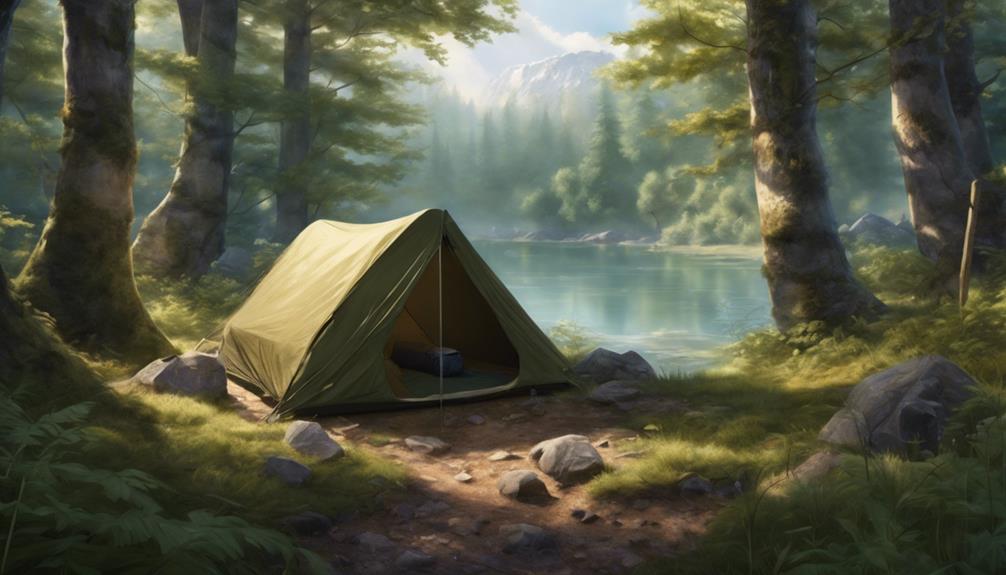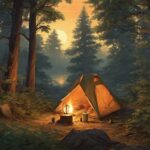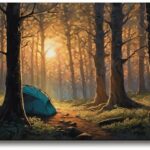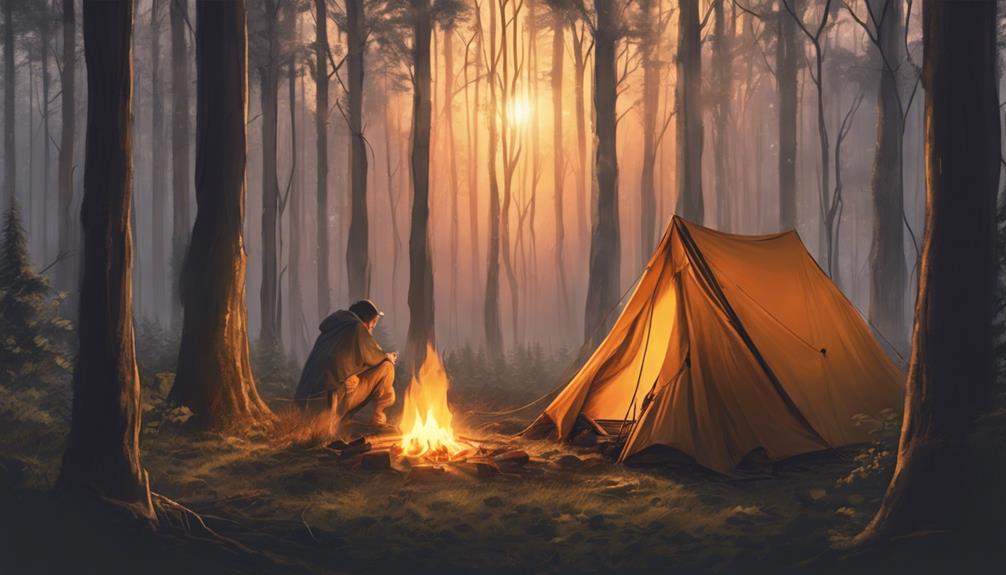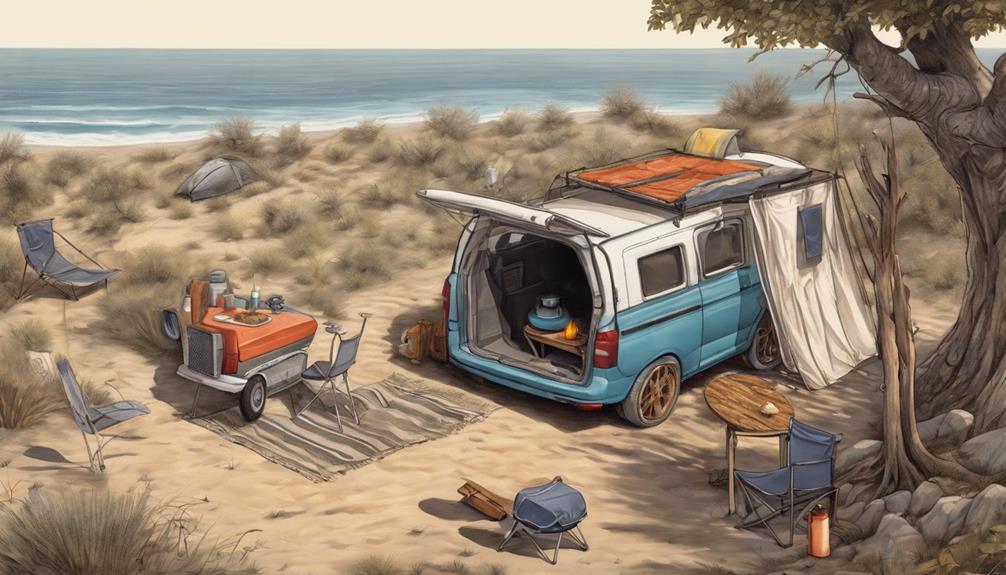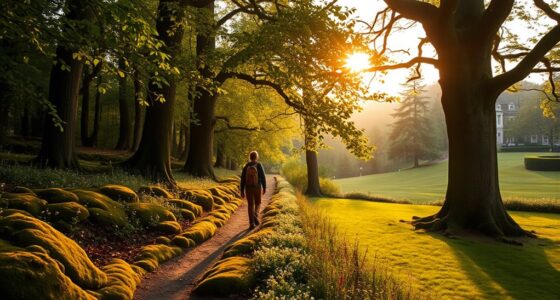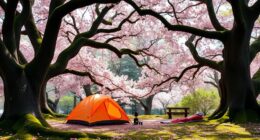In the realm of discreet tent camping, our guide stresses the importance of key equipment such as a low-profile tent and dark-colored backpack for seamless blending in. It is essential to select a private and secluded campsite with natural cover, as well as using earth tones and minimizing noise to keep a low profile.
Blending into the natural surroundings and adhering to Leave No Trace principles are also key components of successful discreet outdoor adventures. Master these tips for an unforgettable experience in the wilderness.
Key Takeaways
- Choose low-profile gear in natural colors for blending in.
- Camp in secluded areas away from popular spots.
- Minimize noise and use camouflage clothing for discretion.
- Follow Leave No Trace principles for sustainability and respect.
- Utilize natural cover and keep a low profile to avoid detection.
Essential Stealth Camping Gear
When embarking on a stealth camping adventure, having the right gear is crucial for a successful and comfortable experience. A low-profile tent is essential for a stealthy setup, allowing you to blend into your surroundings and avoid drawing unwanted attention. Opt for a dark-colored backpack or duffel bag to further camouflage your gear in the wilderness.
Ensuring a good night's rest is key, so choose a sleeping bag suitable for the expected temperature to keep you warm and cozy throughout the night. A quality sleeping pad not only provides insulation from the cold ground but also offers cushioning on uneven terrain for a more comfortable sleep. An inflatable pillow is a wise addition to your gear, as it adds that extra touch of comfort without taking up much space in your pack.
Choosing the Right Campsite
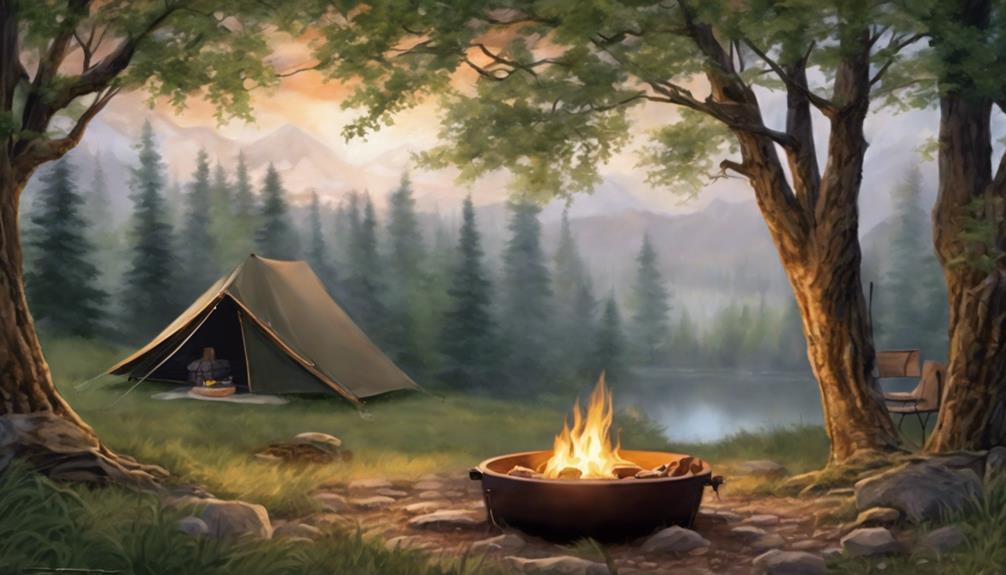
To ensure a stealthy camping experience, identifying the right campsite plays a critical role in maintaining a low profile and minimizing the risk of detection. When selecting a campsite for discreet camping, prioritize private and secluded areas that offer natural cover to blend in with the surroundings.
Look for spots with minimal foot traffic and limited visibility to avoid drawing unwanted attention. Consider camping near water sources for convenience while remaining discreet. Opt for locations away from popular trails and common camping areas to enhance privacy.
It's essential to choose a flat and level campsite that allows for a suitable tent setup without causing environmental damage. By carefully selecting a campsite that meets these criteria, you can enjoy a stealthy outdoor adventure while respecting nature and minimizing your impact on the environment.
Blending Into Natural Surroundings
We can enhance our stealth camping experience by seamlessly blending into the natural surroundings using a low-profile tent in natural colors such as green or brown. Opting for a tent that matches the environment helps avoid standing out and drawing attention.
When selecting a campsite, aim for a secluded area away from popular trails and high-traffic spots to ensure privacy and minimize visibility. Utilize natural materials like branches, leaves, and rocks to camouflage your tent and gear, making them less noticeable from a distance.
It's crucial to avoid using bright lights or creating loud noises that could attract unwanted attention, disrupting the peaceful environment you seek. Additionally, be mindful of scents by refraining from strong-smelling food or personal care products that might lure wildlife or other campers to your location.
Maintaining a Low Profile
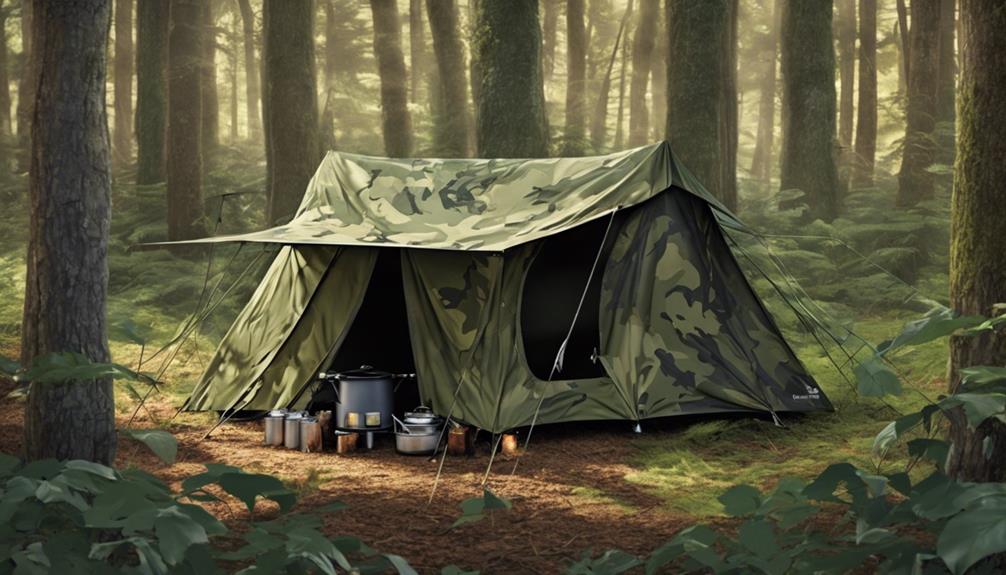
For a stealthy camping experience, maintaining a low profile is essential to avoid drawing unwanted attention to your campsite. When selecting camping gear, opt for colors that blend into the surroundings, like earth tones or dark shades, to minimize your impact and avoid standing out.
It's crucial to set up your tent in secluded areas away from popular trails and campsites to ensure privacy and discretion while urban stealth camping. Keep noise levels to a minimum and avoid using bright lights that can attract attention.
Camouflage clothing and gear can also help you blend in with the environment and avoid drawing unwanted eyes towards your campsite. Remember to tidy up your campsite and use natural materials like branches and foliage to further conceal your presence.
Leave No Trace Principles
When stealth camping, adhering to Leave No Trace principles is paramount for minimizing your environmental impact and ensuring the preservation of natural spaces. To minimize noise and respect the tranquility of your natural surroundings, practice responsible outdoor ethics by following these tips. Dispose of waste properly by carrying out all trash, including food scraps, and using designated waste disposal areas when available. Leave natural items untouched; avoid picking flowers, disturbing rocks, or damaging trees.
Respect wildlife habitats by observing animals from a safe distance and not feeding them. By incorporating Leave No Trace guidelines into your stealth camping routine, you can help preserve nature's beauty and ensure the wilderness's integrity for future outdoor adventurers. These sustainable camping practices not only reduce your ecological footprint but also contribute to a more responsible and enjoyable outdoor experience.
Embrace Leave No Trace principles as a fundamental part of your stealth camping adventures to promote wilderness sustainability and maintain the natural harmony of the environments you explore.
Frequently Asked Questions
Is Stealth Camping Illegal in Usa?
Stealth camping legality in the USA varies; understanding local rules is crucial. Violating regulations can lead to fines or removal. Researching laws beforehand helps us avoid legal issues, ensuring responsible and informed camping practices.
Is Stealth Camping Just Trespassing?
Stealth camping isn't just trespassing; it's about strategic, low-impact outdoor stays. By respecting laws, nature, and others, we can enjoy secluded adventures responsibly. With proper planning and awareness of regulations, we can camp discreetly.
What Is the Difference Between Boondocking and Stealth Camping?
We distinguish boondocking as remote camping with self-contained vehicles and stealth camping as discreet urban or off-limits camping. Boondocking prioritizes self-sufficiency in natural settings, while stealth camping involves blending in and avoiding detection in varied environments for unique outdoor experiences.
How Do You Get Away With Stealth Camping?
We stay hidden by choosing secluded spots, minimizing noise and light, and using natural camouflage. Our goal is to leave no trace and blend in with the surroundings for a discreet camping experience.
How Can I Maintain Stealth and Discretion During Outdoor Adventures?
When embarking on outdoor adventures, maintaining stealth and discretion is crucial. To keep the outdoor adventure spirit unleashing while staying low-key, choose muted gear and clothing. Stick to quiet paths and minimize loud noises. Limit exposure and use natural cover to remain inconspicuous.
Conclusion
In conclusion, stealthy tent camping requires strategic gear, careful site selection, natural blending, and low-profile behavior. By following these principles and practicing Leave No Trace ethics, outdoor enthusiasts can enjoy discreet adventures in the wilderness.
Remember, pack smart, stay hidden, and leave nature untouched for the next stealthy camper to enjoy.
Happy camping!

